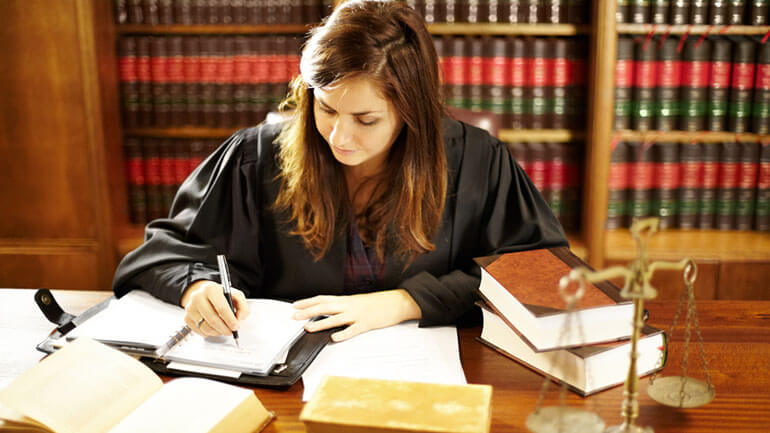Understandably, the majority of budding lawyers arrive on their degrees with heads filled with scenes from glamorous courtroom dramas, eager to get their first experience of a courtroom trial. And, of course, you can’t let anyone loose in a real-life courtroom which is where mooting comes in. But just what is mooting?
The road to becoming a lawyer is long and difficult; when you’re responsible for upholding the law and fighting for justice it’s necessary to have the strictest and most stringent of training before being unleashed on the legal system.
However, law students and young lawyers in training need to gain practical experience of a courtroom before they embark on their legal careers and get a taste of the thrill of presenting their evidence and fighting for their clients.
So, a system called Mooting was devised where prospective lawyers could develop their advocacy skills in a realistic environment, complete with full legal dress including wigs and gowns.

What is Mooting?
Mooting is a competitive system devised by law schools to allow students to test their advocacy skills in a safe but realistic courtroom style environment.
A Mooting simulates a court hearing, often in the form of an appeal against a final decision. During the Mooting, students will analyse the given problem, research the relevant laws that apply to the case and prepare written submissions before finally presenting their oral argument for the judge presiding over the Mooting.
The issues argued during mooting are usually centred on areas of law which are unsettled or have been subject to recent developments. Each person in the mooting will take one of two grounds of appeal and will argue their position for the judge.
Competing students are expected to bow to the presiding judge, then the clerk announces the subject of the moot before each mooter is asked to present their submissions.
Once the submissions are heard, the judge will ask each mooter questions then the court adjourns. Following the adjournment, the judge returns to deliver their judgement and feedback for each student competing in the mooting.
The process of mooting could be mistaken by some for a mock trial.
However, mooting is slightly different, as it assumes that the evidence has already been tested. And so instead, focuses on practising speech and the ability to argue the question of law.
As opposed to mock trials that ‘test the evidence’ and establish the case’s facts before presenting them in a real court of law.
Who has to compete in mooting?
Certain law courses require mooting as a compulsory element of the course.
However, it is still a totally voluntary student-organised activity in other law schools. If you have mooting experience on your CV then this can have a positive impact on your future career.
Many mooting trials at various institutes require their participants to wear full legal dress comprising of wigs and gowns. This is because it better simulates the real pressures and responsibilities of presenting a submission in a court of law.
By wearing the legal gowns and barristers wigs that have been traditionally worn throughout history since the 17th century, it encourages students to respect the prestige of the institution they are entering into.
For more information about the history of the legal wig, read our blog here.
Graduation Attire and Evess specialise in providing full legal regalia for these practice courtroom mooting sessions. We supply top quality legal gowns, barrister wigs and accessories to the legal profession in courts all over the world.
If you have a mooting session coming up, we can help you to find your legal gown and barrister wig to ensure that you look your best while presenting your case.
